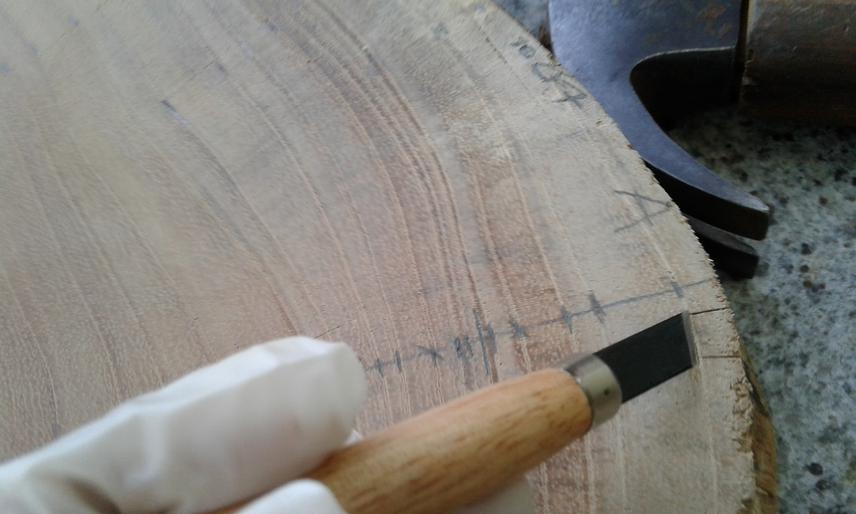Kathelyn Paredes Villanueva
Other projects
28 Jul 2020
Application of Timber Tracing Methods in Tropical Forests: Identifying Bottlenecks Along the Timber Chain of Custody
Characterise 18O and 13C isotopes ratios among the sample sites of Cedrela odorada and Cedrela fissilis and determine the level of differentiation for tracing origin purposes.

Selection of tree rings, previously dated, for flake extraction.
Illegal logging is one of the main drivers of species degradation and contributors to global warming. This practice negatively impacts to forest stakeholders at international and local scales. Major economic activities in developing countries, like Bolivia, are based on the use of natural resources. Total wood production account for 3% of GDP and about 50 thousand people in the country are directly involved in operations related to forest activities as timber extraction, transport and processing. Logging activities are done with prior trees’ inventory and obligatory management planning considering population structures and ecosystem conditions to intervene. Transportation of harvested timber is companied by an origin declaration which is the only document proving the legal origin of timber. Effective control strategies and non-manipulate tools, as stable isotopes, are required to counteract illegal harvesting and trade of tropical timber. Stable isotopes in biological materials as wine, honey, meat and other goods have proven to be useful to test adulteration and trace geographical origin. We selected one of the major South American timber genera, Cedrela, that includes species CITES-listed, to assess potential for timber tracking based on stable isotopes composition of wood in Bolivia, a country harbouring several Cedrela species and exporting large quantities of timber from these species.
The overall objective of the project is to support the implementation of sustainable forest management in Bolivia through developing complementary methods to detect illegal logging. We will assess the distance resolution in which 18O and 13C isotopic composition of Cedrela’s populations can differentiate along their distribution in Bolivia. This implies that a wide range of altitudes and rainfall regimes will be included. Core samples will be taken from eleven sites and cellulose will be extracted from the organic wood samples. All cellulose samples will be analysed in a continuous flow mode with an element analyser coupled to a mass spectrometer. Resulting values will be evaluated in relation to distance and latitude of the samples.